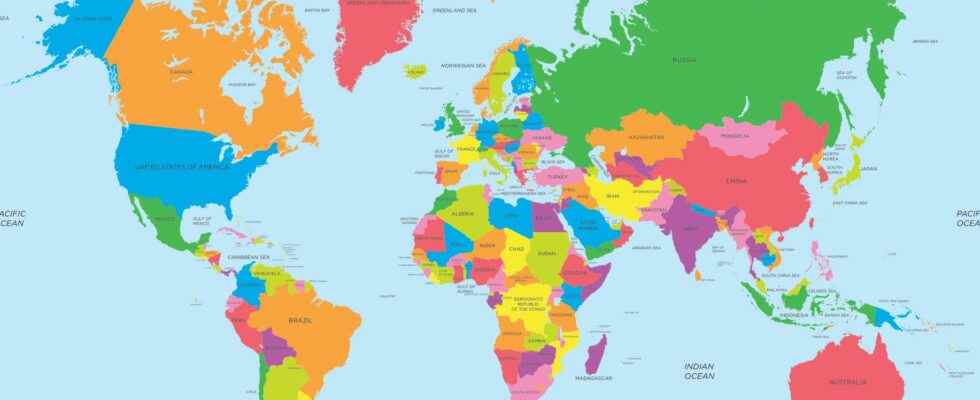Nearly 200 states are officially recognized by the United Nations. In recent history, the number of countries has thus quadrupled. But some are disputed by member states, others are subject to special sovereignty or are subject to an ambiguous status.
The United Nations (UN) recognizes 195 country independent, including its 193 members and two permanent observer states (Vatican and Palestine). Two other States (Cook Islands and Niue) are full members of several specialized UN agencies in collaboration with New Zealand.
Distribution of countries on the continents
- Africa: 54 countries
- Asia: 48 countries
- Europe: 44 countries
- Latin America and the Caribbean: 33 countries
- Oceania: 14 countries
- North America: 2 countries
Disputed countries
The UN list is far from achieving consensus. Cyprus, independent since 1960, is thus not recognized by Turkey, yet itself a member of the UN. Another example: the France still refuses to grant diplomatic recognition to North Korea.
Conversely, some states are not recognized by the UN but by at least one member of the organization, such as Kosovo, which declared itself independent in 2008 and recognized by 103 states, or Taiwan, recognized by 14 states — but which has no never declared independence.
Evolution of the number of countries in the world
Number of country in the world exploded under the effect of the decolonization. In 1914, the world had only 53 countries recognized as independent. At that time, dominions such as Australia, Canada or New Zealand were still under British sovereignty. At the end of 1945, the newly created United Nations had 51 member states, while 72 states shared the world. Decolonization and the break-up of the soviet bloc will multiply this figure by four. Latest creation to date: South Sudan, declared independent in 2011 after years of civil war.
Interested in what you just read?
